TURKEY
Istanbul

Istanbul
Istanbul
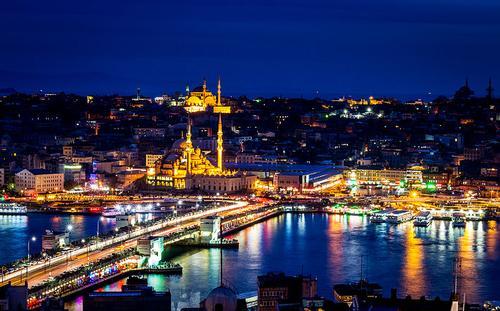 Istanbul at nightPhoto: Jurai Patekar CC 2.0 Generic no changes made
Istanbul at nightPhoto: Jurai Patekar CC 2.0 Generic no changes made
Istanbul is the most densely populated city in Turkey. It is also the country's cultural and economic center. The oldest part is built on seven hills and has given the city the nickname "The city on seven hills". The city stretches on both the European and Asian sides of the Bosphorus, making it the only metropolis in the world located on two continents. The city has 11,372,613 inhabitants according to the 2007 census.
Location
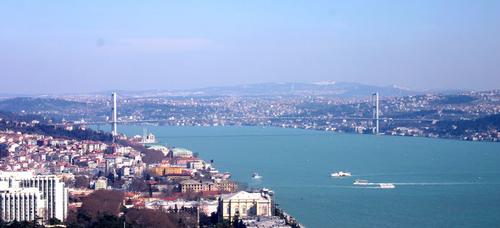 Bosporus near IstanbulPhoto: Bertil Videt CC 2.5 Generic no changes made
Bosporus near IstanbulPhoto: Bertil Videt CC 2.5 Generic no changes made
Istanbul lies on the Bosphorus and is enclosed by the Golden Horn, the natural harbor in the northwest of the country. Istanbul is located at 41 degrees north latitude and 29 degrees east longitude. The Bosphorus, connecting the Sea of Marmara with the Black Sea, divides the city into a European side and an Asian, Anatolian side. Istanbul is on the border between the African and Eurasian plates. This fault zone, which runs from Northern Anatolia to the Sea of Marmara, is responsible for several major earthquakes. Istanbul territory covers an area of 1,538.77 km².
Weather
Istanbul has a Mediterranean climate. Temperatures are affected by two maritime winds. The north-easterly Poyraz wind brings cool air from the Black Sea and the stronger south-westerly Lodos wind brings warm air from the Mediterranean. Summers are relatively warm and dry, July and August have an average temperature of 23 °C and only four days of rain. During the winter it is cold, wet and it often snows, with temperatures averaging 5 °C in January and February. The highest temperature ever recorded in Istanbul is 41 °C and the lowest temperature ever recorded is -9 °C. In late spring and early autumn the weather is very pleasant and therefore the best time to visit the city.
History
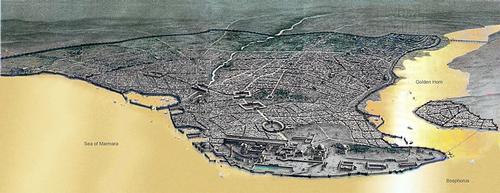 Istanbul in the time of ConstantinoplePhoto: Public Domain
Istanbul in the time of ConstantinoplePhoto: Public Domain
Byzantium was originally a Greek city. The Roman Emperor Constantine the Great renamed the city Constantinople. Constantinople became the capital of the Roman (later Eastern Roman or Byzantine) Empire for almost a thousand years. Sultan Mehmed II conquered Constantinople and Istanbul became the capital of the Ottoman Empire in 1453. By the mid-1500s, Istanbul, with a population of nearly half a million, became an important cultural, political and commercial center. When the Republic of Turkey was founded in 1923, the capital was moved from Istanbul to Ankara. For a complete overview of the history of Turkey see the history page of Landenweb.
Sights
Istanbul has a long history at the center of empires and offers a wealth of historical and religious sites. Most of these ancient monuments date back to the Roman, Byzantine and Ottoman periods. Highlights include Hagia Sophia, Topkapi Palace, Sultanahmet Mosque (Blue Mosque) and the Basilica Cistern all located around Sultanahmet Square.
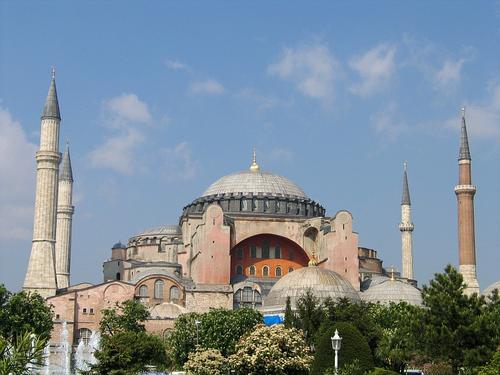 Istanbul Haghia SofiaPhoto: Osvaldo Gago CC 3.0 Unported no changes made
Istanbul Haghia SofiaPhoto: Osvaldo Gago CC 3.0 Unported no changes made
A must-see for all tourists in Istanbul is Haghia Sophia, this old basilica was built for the Roman Emperor Justinian I and later improved by Emperor Constantine. The 30-meter dome was the largest enclosed space in the world for over a millennium. This majestic structure withstood many conflicts (including a 13th century crusade) and was later converted into a mosque by the Ottomans. Today it is a museum of ancient relics.
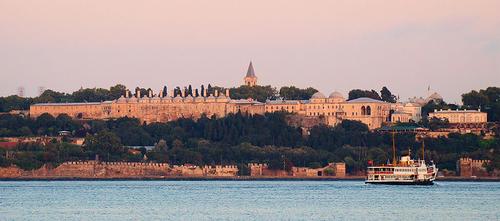 Topkapi Palace in IstanbulPhoto: Bjørn Christian Tørrissen CC 3.0 Unported no changes made
Topkapi Palace in IstanbulPhoto: Bjørn Christian Tørrissen CC 3.0 Unported no changes made
Topkapi Palace served as a seat of government and summer residence for members of the Ottoman elite. The palace is richly decorated and peaked in 1500. At the center of the complex, visitors to this prominent local landmark see lavish courtyards. The fourth and inner courtyard offers unparalleled views of the Bosphorus.
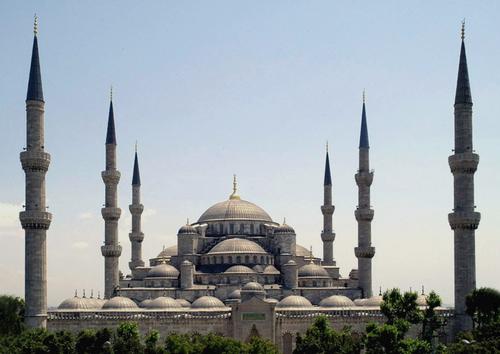 Blue Mosque IstanbulPhoto: Dersaadet CC 3.0 Unported no changes made
Blue Mosque IstanbulPhoto: Dersaadet CC 3.0 Unported no changes made
The Blue Mosque is an Islamic place of worship, known locally as Sultanahmet Cami. The mosque was built around 1600 as a rival to Haghia Sophia. The Blue Mosque features six minarets and an opulent interior decorated with sapphire Iznik tiles and elaborate ironwork.
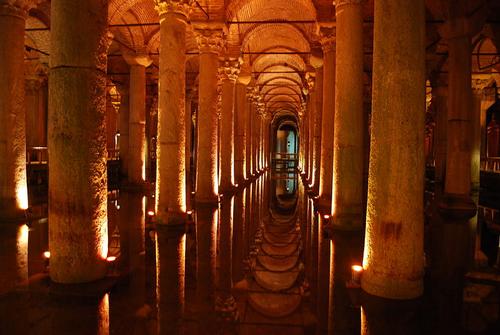 Basilica Cistern IstanbulPhoto: Dpnuevo CC 3.0 Unported no changes made
Basilica Cistern IstanbulPhoto: Dpnuevo CC 3.0 Unported no changes made
Emperor Justinian ordered the construction of the Basilica Cistern, an underground water reservoir from the 6th century. Images of Medussa flank the reservoir and atmospheric music and dim lighting combine to create a terrifying effect. Some visitors bring fish food for today's residents.
Some other sights are scattered around the peninsula of the old city, such as the Church of the Savior in Chora (Kariye Muzesi), with frescoes and mosaics.
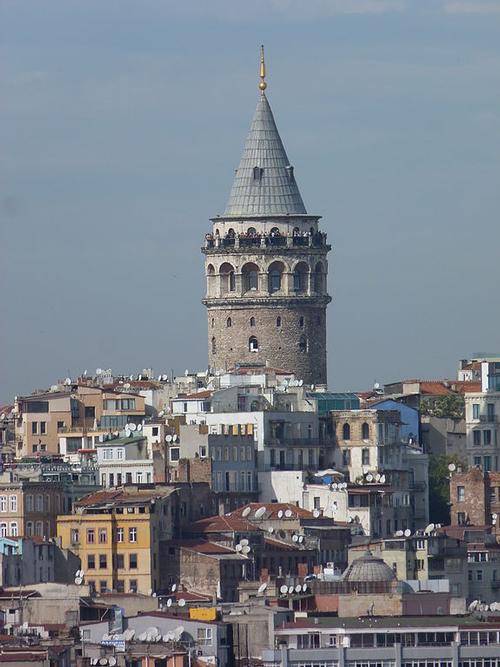 Istanbul Galata TowerPhoto: Derzsi Elekes Andor CC 4.0 International no changes made
Istanbul Galata TowerPhoto: Derzsi Elekes Andor CC 4.0 International no changes made
North of the peninsula of the old city, opposite the Golden Horn, is Galata, crowned by the Galata Tower. There, another place of religious significance is the Whirling Dervish Hall of the Sufi Mevlevi order. Further north, Istiklal Street is Istanbul's most prominent pedestrian street, running from Galata Tower to Taksim Square, the city's central square.
Taksim Square is the heart of the new Istanbul, the city's main business district. On the banks of the Bosporus are pleasant neighborhoods with beautiful mansions (Yali) and a number of palaces located on the water.
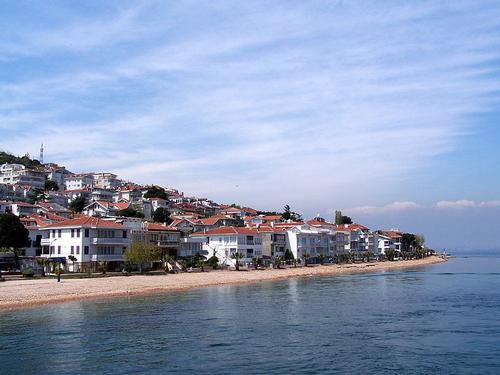 Prince Islands near IstanbulPhoto: Darwinek CC 3.0 Unported no changes made
Prince Islands near IstanbulPhoto: Darwinek CC 3.0 Unported no changes made
On the other side of the Bosphorus to the east is the Asian side with the historic districts of Kadiköy and Üsküdar. Southeast of the city are the Princes' Islands, an archipelago of nine car-free islands with beautiful wooden mansions and pine trees.
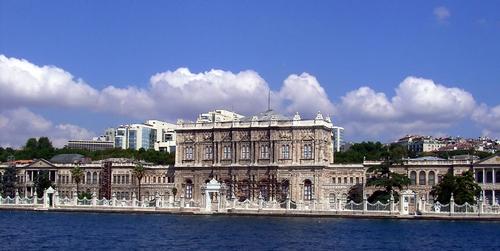 Dolmabahce Sarayi Palace IstanbulPhoto: Robert Raderschatt in the public domain
Dolmabahce Sarayi Palace IstanbulPhoto: Robert Raderschatt in the public domain
The Dolmabahce Sarayi Palace was built in the 19th century by Adbul Mecit and is today an imposing star attraction. It was so luxurious that it ushered in the bankruptcy of the Ottoman Empire. Mecit spared no expense and even hired an Armenian architect to give the palace a more international look. The result is an evocative mix of Turkish, European and even Hindu architectural styles, with a sumptuous interior.
Tips
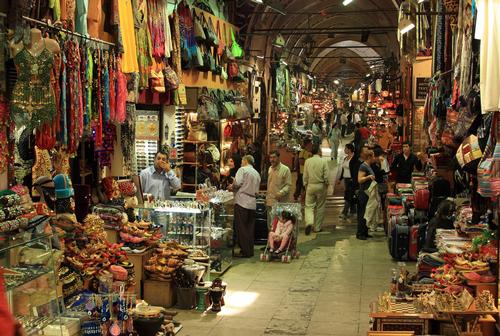 Istanbul Grand BazaarPhoto: Dmgultekin CC 3.0 Unported no changes made
Istanbul Grand BazaarPhoto: Dmgultekin CC 3.0 Unported no changes made
The Grand Bazaar is actually the center of a large commercial area consisting of a fully covered market near Eminönü. The name “Grand Bazaar” refers to more than 4,000 shops, 24 Hans (privately owned inns or markets), 65 streets, 22 gates, and many restaurants, mosques, fountains, and tea houses in an area of 31 acres. There is really everything for sale and smooth sellers try to lure you to their booth.
A boat trip on the Bosporus also takes you out of the crowd. The boats depart from the harbor between Galata Bridge and Sirkeci station. Most cruises last approximately two hours. You sail close to the European and the Asian side. This way you can also get a good look at the beautiful palaces and Yali's on the water. It is possible to do it touristy, but you also see a lot with ferries and the price is a lot more attractive.
Useful links Istanbul
BBC Country ProfilesWorld Fact Book Explore all Countries
How to call
Last updated November 2025
Copyright: Team - The World of Info